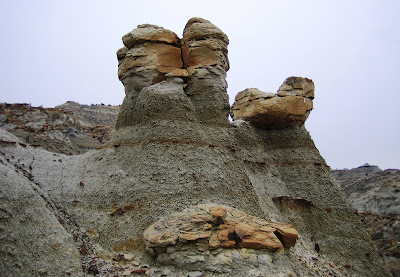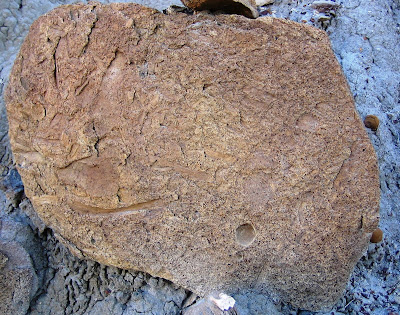That's how it is on Butte, Montana's, uptown walking trail. Sometimes called the "Butte Hill Line," it's a "rails to trails" path that follows part of the old Butte, Anaconda, and Pacific rail road grade. The BA&P never got past Anaconda, the Pacific being another 500 or so miles west. But it ran a lot of ore from the Butte mines to the Anaconda smelter, much of as an electric railway from 1914 to 1967. The old line was heavily polluted by arsenic and heavy metals, but it was capped and made into an urban historical trail complete with interpretive signs.
Most of the time, if I'm going for a walk, I head out the backdoor and into the hills. But my wife Jan and her friends have taken to walking the uptown trail, and so there we were, with RTD, on a sunny but cool Sunday afternoon. We began at the Anselmo mine yard (est. 1887) on Excelsior Street a half mile or so below our house. The Anselmo "gallows frame" (aka the head frame used to lift ore and miners) stands tall above the landscape:

We walked uphill and east, passing the Missoula Gulch area. Arco-British Petroleum and EPA made a half-hearted effort to cover up this vast tailings wasteland about a decade ago. They used a thin cover of soil, planted exotic grasses, and called it good. While an improvement over the vast barren area that contributed a lot of dust on windy days, it's a piss-poor permanent remedy. Here's RTD next to one of the many "failed" spots on the cover up, where acid and metals-laden tailings have burned their way back to the surface:

The trail passes through the funky neighborhoods of uptown Butte, and under Montana Street:

And Main Street:

One can imagine what it was like to live here a century ago in the "glory days" of mining with its filthy air, barren landscape, and dangerous working conditions. Today, we can safely romanticize the era of Industrial America. And in this post-industrial age Butte is groping along into the future much like other preterit towns such as Bradford, Pennsylvania, or Troy, New York. Nice views, even if you can't eat the scenery:

Neighborhood along the trail with the Original gallows frame in the left background:

View up the hill to the Mt Con gallows with the Butte motto, "Mile High, Mile Deep" (and an incoming plane in the right background):

And the end of the line with the Kelley gallows (est. 1947, the junior of the Butte underground mine family) looming in the background and the East Ridge (of the Continental Divide) behind all:

We turned around and headed back to the Anselmo and home. It was a nice walk, and I was heartened to see another six or eight walkers out and about on this chill day. Everyone, I think, had at least one dog with them. I don't think it's required that you own a dog to live in Butte, but I do think you need to own at least one in order to buy a house here!
-----------------------------------
Butte, Montana: along the Continental Divide at the headwaters of America's largest Superfund site.










































